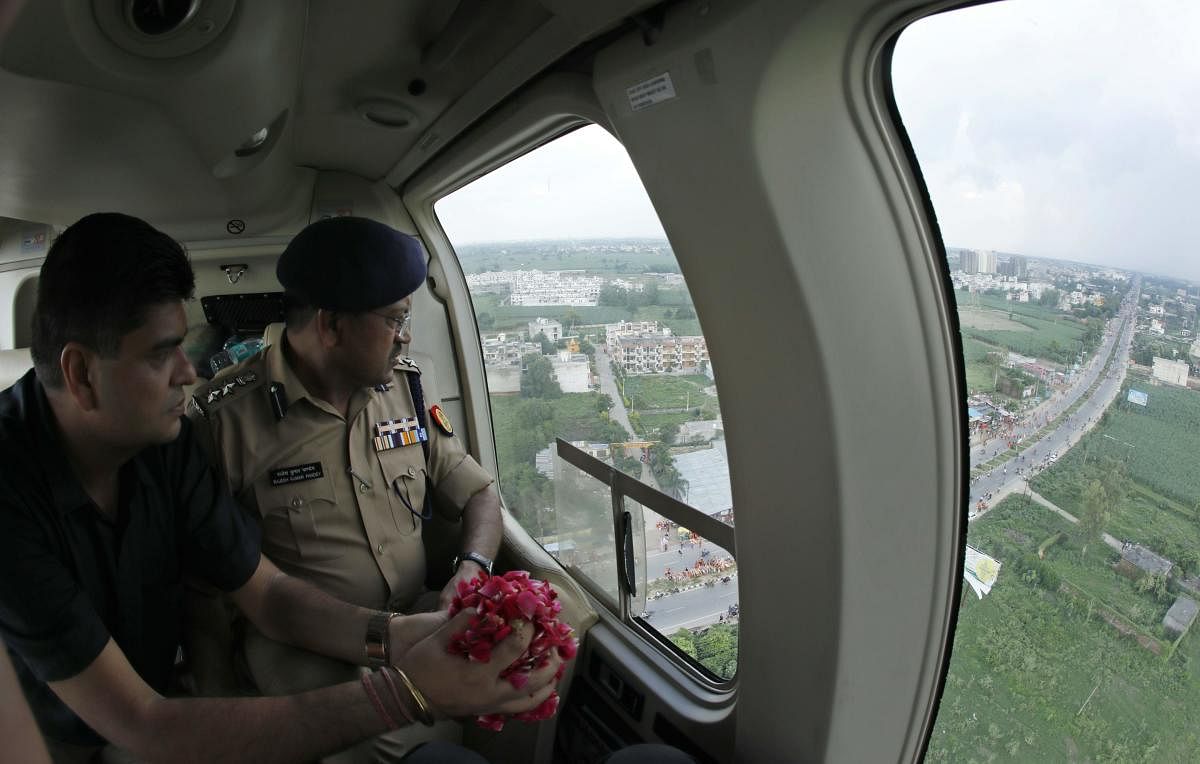
The Uttar Pradesh Police is amongst the oldest, and clearly the largest, police force in the country and the world. With a population of over 200 million under its protectorate, it covers a population that is equivalent to that of Brazil. The physical scale aside, the socio-economic challenges and tensions within the state with a known history of civic disorders, riots and societal unrest makes it extremely challenging to police. The 1980 Moradabad riots, 1987 Meerut riots, 1992 demolition of Babri Masjid and the 2015 Muzaffarnagar riots are examples of the communal tinderbox of UP.
With eight of the 14 prime ministers with a strong UP-link (not counting Narendra Modi who, too, won the last election from Varanasi), UP remains the proverbial heartland of Indian politics and its accompanying energies, dissensions and assertions.
Despite carving out the state of Uttarakhand in 2000, UP still has 80 out of the country’s 543 Lok Sabha constituencies, which makes these Gangetic plains the centre of political experimentation, populism and appropriation.
This political significance of UP makes the governance institutions like its police forces vulnerable to political interference, colour and non-professional priorities.
As part of the embedded social fabric and susceptible to the topical winds of societal churn, the police forces struggle to retain the professional rectitude and apolitical bearing and often get sucked into the larger narrative of political preferences. This leads to a sub-optimal policing effort that has disastrous consequences.
The relative ‘barrackisation’ and deliberate isolation from the societal morass and regressions have ensured that unlike the police forces, the Indian Armed Forces retain their professional efficacy, edge and ‘kinetic’ abilities.
A couple of years ago, Haryana witnessed a hapless display and virtual capitulation by its police force when challenged by a sectarian protest, in taking a self-styled godman out of his ashram in Hisar, and later in handling a ‘sit-in’ at Panchkula by the followers of yet another godman. Later, it took just six army columns to bring the situation under control.
The dire need to professionalise, upskill and arm the police forces across the country have been the subject of various police reform committees, but to little avail or consideration. A damaging perception has set in across the country of a willful effort to perpetuate the systemic rot, due to a mutually gratifying police-politician equation. The fact that the career implications, postings and promotions of police personnel are dependent on the whims of the various political dispensations negates all efforts to extricate the police forces from political pressure, tilts and instincts.
The police and para-military forces are ordered to protect and ensure the safety of various religious, sectarian and political yatras and conclaves.
Muharram Taziyas, Nagar Kirtans, Kumbh Melas and the annual Amarnath Yatra are some of the multi-cultural and multi-religious congregations that are given police protection in a proudly secular country.
The tasks are usually conducted with planning, deployment and administrative concerns, e.g., this year’s Amarnath Yatra involving two lakh pilgrims necessitated the posse of over 40,000 armed policemen from the state and the para-military, bullet-proof convoys, electromagnetic chip vehicles, bunkers, etc., to dot the entire route by sanitising and protecting the entire Yatra.
However, given the mandated apolitical moorings of the security forces and the need to ensure optics of concern, as opposed to any religious bias – the efforts of the security forces involved in such protection mode are strictly professional, medical or administrative in nature.
In a polarised society and vitiated environment, the police force protecting the Muharram Tazia cannot go beyond ensuring the requisite cordon, order and timeliness — it cannot be seen taking a biased role in the explosive sectarian angularity of the underlying Shia-Sunni tensions that besets such situations.
Therefore, when the annual Kanwariya yatra of the Shiva devotees is undertaken in the auspicious month of Shravan, the state administrative agencies gear up to ensure the requisite safety, security and social order accompanying the ritual of millions walking across the public roads.
Given the history of civic disturbances, traffic issues and mob-related issues that mar such solemn occasions, the police try to create dedicated walking paths, identify and man sensitive spots, set mobile health facilities and designate ‘break-points’, etc.
However, recent reports that the UP government had spent Rs 14 lakh to shower rose petals from a chopper, that too by a senior police officer in uniform, militates against the professional codes and conduct of the ‘uniform’.
The ostensible clarification that the showering of rose petals is an intrinsic part of Indian culture, tradition and welcome is true, but the same act could have been done by any other cultural, social or civil administration official, and certainly spared an Additional Director General-level officer from partaking in the same.
There are enough law and order, social and religious tensions prevailing in UP and the police force is already stretched to its limits. The 2017 CAG report on the UP Police notes ‘severe capacity constraints’ and that ‘the state has only 50% police stations against the required numbers’. The damning report recorded ‘obsolete weapons’, ‘outdated communication technologies’, ‘mobility of the police force for patrolling and other purposes is severely constrained due to the acute shortage of vehicles and obsolescence of its fleet,’ etc.
With this backdrop, the recent images of various police officers indulging in non-professional bustle, whilst adorning the apolitical-uniform is a sad reflection of the politicisation of the police forces. Such visuals negatively impact the public perception of the police forces in taking on the powerful mafias, bigotry and corruption.
All political parties are guilty of tampering with the police forces and that has led to the more-than-desired requisitioning of the Armed Forces to handle the ‘policing’ tasks, as the police forces itself is attracted towards non-professional and partisan acts.
(The writer is a former L-G of Andaman and Nicobar Islands and Puducherry)